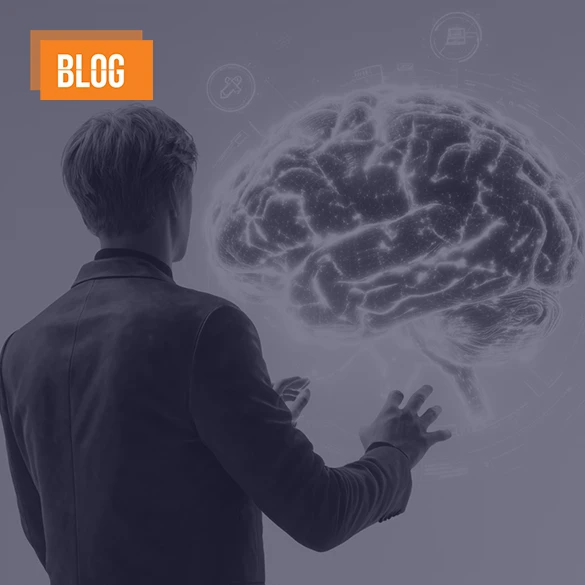What is Machine Learning and Deep Learning?


One of the most notable films of 2021 and perhaps the last 2.5 years of the pandemic, the Matrix 4 met with the audience at the end of December. It is one of the most important examples of the “struggle” between humans and machines in the history of cinema, but it is not the only one. The efforts of intelligent machines, including Terminator, created by humans, to destruct humanity on their own have been a subject that has not aged for decades.
Although Hollywood has focused on the dark side of the machine and human relationship in movies that have been watched billions of times when Alan Turing developed the machine that decoded the Enigma in World War II and prevented nearly a million people from dying, peace was at the heart of the machine and human relationship.
In fact, everything is hidden in the first sentence of Turing's article “computing machine and intelligence”, published in 1950:
I propose to consider “Can machines think?” question…”
In section 7 of the same article, we can find an explanation that pushes the boundaries of that period on machine learning but let’s start by simply explaining what machine learning is in today’s reality.
What is Machine Learning?
Machine learning (ML) is the use of mathematical models that help people learn without the need for clear commands about a computer deciding what to do.
In other words, we can position machine learning as a subset of artificial intelligence that shapes patterns in data with algorithms and creates a predictive data model based on how people learn. In summary, we are talking about machines that can experience data and use it. In fact, what we call experience is that it means learning without any external instructions when it comes to the human brain. If you trade a specific product for a long period of time, it can easily make trade predictions, such as changes in demand for a certain product or whether the incoming customer wants the product or not. This is exactly what artificial intelligence is targeting today. The only difference is that machines do not learn like us.
What are the Methods of Machine Learning?
Although named differently in the literature, ML methods can generally be grouped under three main headings as consulted or supervised learning, unconsulted or unsupervised, and semi-consulted or semi-supervised learning.
Supervised Learning
Let’s think of a simple function, for example, f(x) = y. The data labeled to learn the purpose of mapping input (x; independent) variables to output (y; dependent) variables here is used for training. Labeled data acts as a teacher and teaches the machine the ability to predict or decide.
As can be understood from the above flow, consulted learning is functional when each data is known in which category (labeled) it is included.
Supervised learning can be divided into two groups as classification and regression.
Unsupervised Learning
Let’s switch back to the previous simple function. Supervised learning had a y value for each x value. In unsupervised learning, there is no y value and there are only x values. In other words, it is a learning method that is specific to cases where only the input is present and in return the output is unknown. So there is no dataset to support the learning process. Therefore, datasets are not labeled, they are grouped into clusters, trying to create patterns and relationships.
The purpose of unconsulted learning is to learn more about data by modeling the structure or distribution that data addresses.
Unconsulted Learning can be divided into two groups as clustering and association.
Semi-Supervised Learning
It can be referred as hybrid learning model. It includes both consulted and unconsulted learning methods. In our simple formula, x inputs and y outputs are used only when some of the labels are known.
The semi-consulted learning model is a very practical and comparably economical method. Let’s not forget that labeling every data is a cost and it is not always possible. As the effectiveness of learning in unlabeled data is conditional, semi-supervised learning approaches are the most preferred models with a hybrid approach.
The fact that we did not specifically answer the question of what is deep learningdeep learning is while listing all these learning models does not mean that it is a concept other than machine learning. Deep learning is one of the types of machine learning that stands out due to its name and complex structure.
What is Deep Learning?
Deep learning is simply a subset of machine learning based on neural networks. One of the most fundamental characteristics of artificial neural networks is that they are made up of layers with multiple inputs and outputs.
Deep learning is made up of a layer of multiple nonlinear complex processes mentioned above. Each layer accepts the output of the previous one as an input. The processes that make up each layer here can be supervised or unsupervised algorithms.
Deep learning has a structure based on learning more than one characteristic level or representation of data. High-level characteristics derive from lower-level properties, creating a hierarchical representation. This representation learns multiple levels of representation corresponding to different levels of abstraction. Deep learning is fundamentally based on learning from the representation of data. Speaking of representation for an image, one can think of a vector of per-pixel intensity values or characteristics such as edge clusters, and special shapes. Some of these features are more representative of the data. At this stage, as an advantage, deep learning methods use efficient algorithms for hierarchical feature extraction that best represents the data instead of handcrafted features.
Machine Learning and Deep Learning Relationship (ML vs DL)
The relationship between artificial intelligence, machine learning and deep learning is actually quite clear. Artificial intelligence, as the largest cluster, is a set of methods that aim to resemble human intelligence. Machine learning is one of the requirements for similarity, and deep learning is a complex subset of machine learning.
So there are concepts sorted in a hierarchy. There is a bond between them, with differences that we cannot think of independently of one another.
What is the Difference Between Machine Learning and Deep Learning?
It would be better to examine the difference between machine learning and deep learning under certain subheadings.
Let’s start with the hardware needs. While ML may not have high calculation needs, it requires working on powerful machines on the DL side.
One of the most important reasons for this is that ML can work on a much smaller amount of training datasets for prediction compared to DL.
ML can manage the learning process by dividing it into small parts and then combining the whole into a single whole. On the DL side, holistic progress is essential, not piecemeal progress.
Therefore, the training period can be much shorter in ML compared to DL.
At the end of all, ML outputs contain a numeric value, such as scores or classification, while DL outputs can be in multiple forms, such as text, scores, or sound.
In summary, even though deep learning is a subset of machine learning, it allows for distinct differences to be separated, as mentioned above.
Which Industries and Fields do Machine Learning Apply To?
Machine learning applications are frequently used in different industries and projects today.
Today, ML is used to estimate personalized health risk factors. With DL, it can diagnose possible cancer from MR images, which are much more complex, without the need for specialist physicians.
Marketing can also benefit greatly from machine learning. For example, emotional analysis can be possible with e-mail or social media messages. In fact, deep learning can be done not only through text but also through multimedia (pictures and videos) for real-time emotional analysis. As a result, brands can offer a choice of real-time content or even suggestions based on customer emotions.
Another area of use in marketing is dynamic pricing. Machines learning from competition, demand, and opportunity data lie behind the almost instantaneous changes in aircraft prices, especially during peak demand periods.
Perhaps one of the most commonly used areas is traffic density and optimal routing. We owe it to machine learning algorithms that we can move forward almost every day with minimal time in city traffic.
And finally, let’s not forget that in the near future, there will be machine and deep learning behind the perfected autonomous vehicles and the unmanned traffic experience.
From a different perspective, Gartner research shows that three of the most important factors in companies’ artificial intelligence investments are to improve the customer experience (59%), reduce costs (54%) and generate revenue growth (43%).
Machine learning will be an integral part of the way digital transformation and sustainable ways of doing business in the coming period. At this point, Etiya’s advanced machine learning services offer companies a wide range of benefits.
Integrate Machine Learning to Your Industry with Etiya
Etiya machine learning services provide an industry and enterprise contribution to the improvement of experience and return on investment. The consolidation of standardized, centralized, clear ways of doing business offers positive impacts on revenue and efficiency, especially for customers. While easy integration and operational supports create convenience for technology teams, consultancy services on Etiya machine learning services are provided to ensure maximum benefit from machine learning services of both commercial and technology teams.
Finally, if you're interested in the article that Alan Touring published 62 years ago, we also recommend you to read the article published 9 years later by Distinguished Prof. Cahit Arf at the Erzurum People’s Conference, “Can Machine Think and How Can They Think?”








